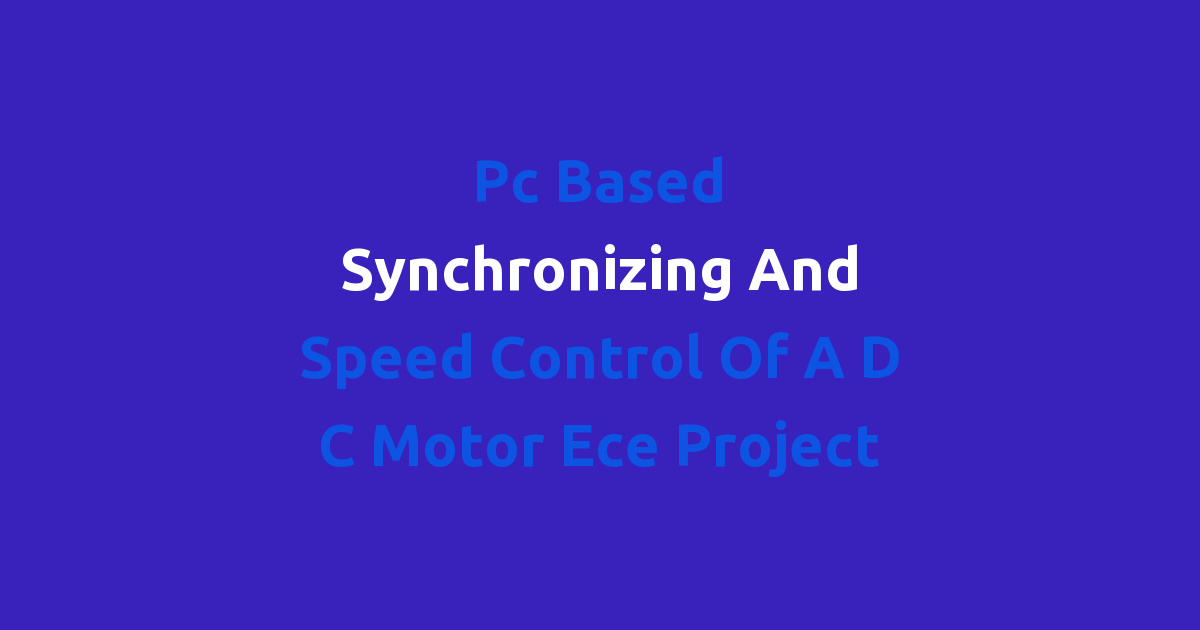Project for controlling and synchronizing a DC motor using a PC-based system.
Introduction
In the field of electrical engineering, the control and synchronization of motors play a crucial role in industrial automation. In this project, we aim to design a system for synchronizing and controlling the speed of a DC motor using a computer interface. This project will help in improving the efficiency and accuracy of motor control systems in various industrial applications.
Problem Statement
The traditional method of controlling the speed of a DC motor involves using manual controls or simple circuitry. This method is often inefficient and lacks precision in speed control. There is a need for a more advanced system that can synchronize multiple motors and provide precise speed control.
Existing System
The existing system for controlling DC motors involves using hardware-based controllers such as potentiometers or pulse-width modulation (PWM) circuits. These systems have limitations in terms of accuracy and flexibility. They also require manual intervention for adjusting the speed of the motor.
Disadvantages
The disadvantages of the existing system include limited speed control options, lack of synchronization between multiple motors, and the need for manual calibration. These factors can lead to inefficiencies in industrial processes and reduce overall productivity.
Proposed System
The proposed system for synchronizing and controlling the speed of a DC motor involves using a computer interface for precise control. This system will allow for real-time monitoring and adjustment of motor speed, as well as synchronization between multiple motors. The use of a computer interface will also enable easy integration with other automation systems.
Advantages
The advantages of the proposed system include precise speed control, synchronization between multiple motors, real-time monitoring, and automation capabilities. This system will improve the efficiency and accuracy of motor control in various industrial applications.
Features
The key features of the proposed system include:
- Precise speed control
- Synchronization between multiple motors
- Real-time monitoring
- Automation capabilities
- Easy integration with other automation systems
Conclusion
In conclusion, the development of a PC-based system for synchronizing and controlling the speed of a DC motor will address the limitations of the existing system and provide a more advanced solution for motor control in industrial automation. This project will contribute to the advancement of motor control technologies and enhance the efficiency of industrial processes.

